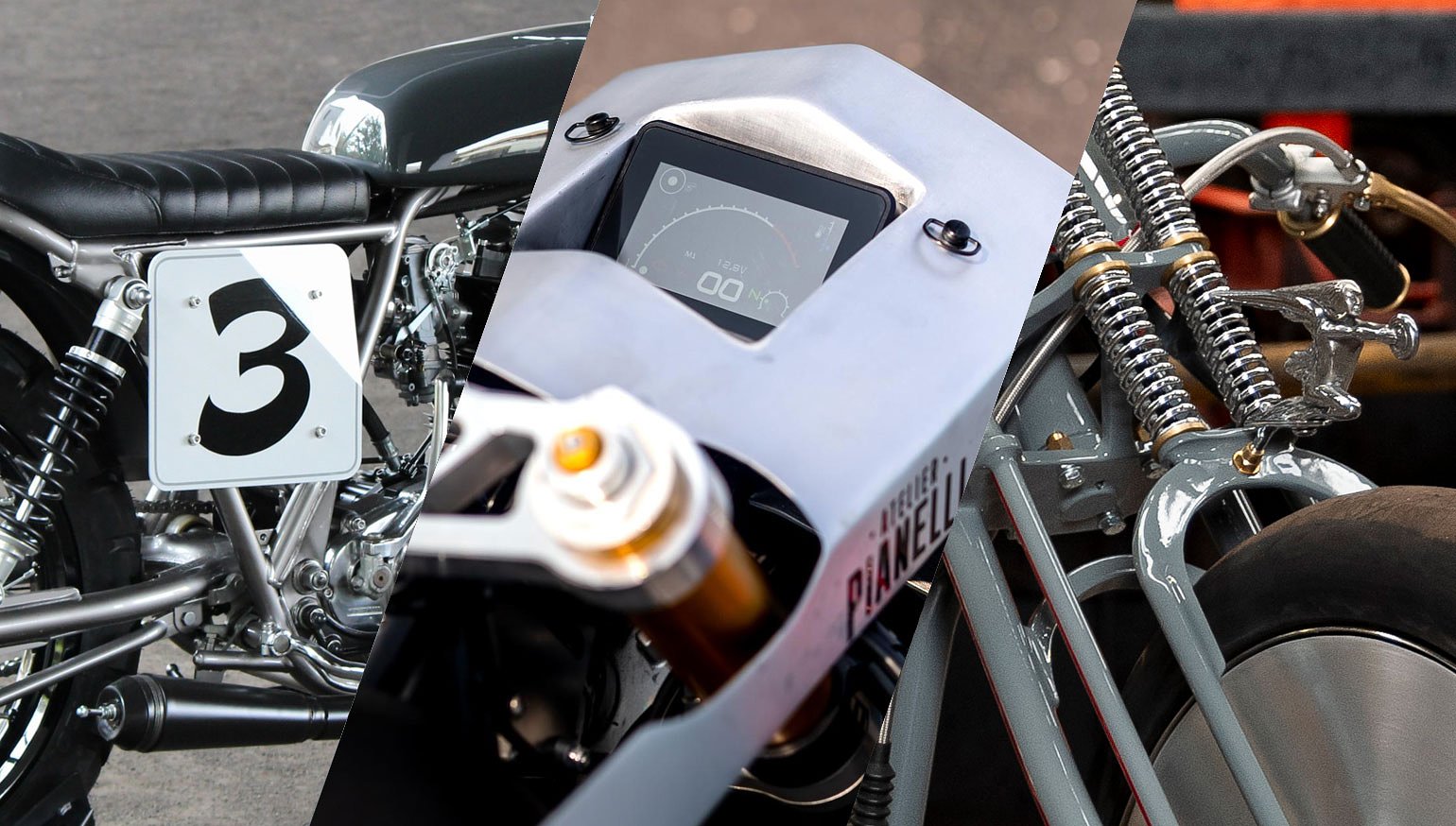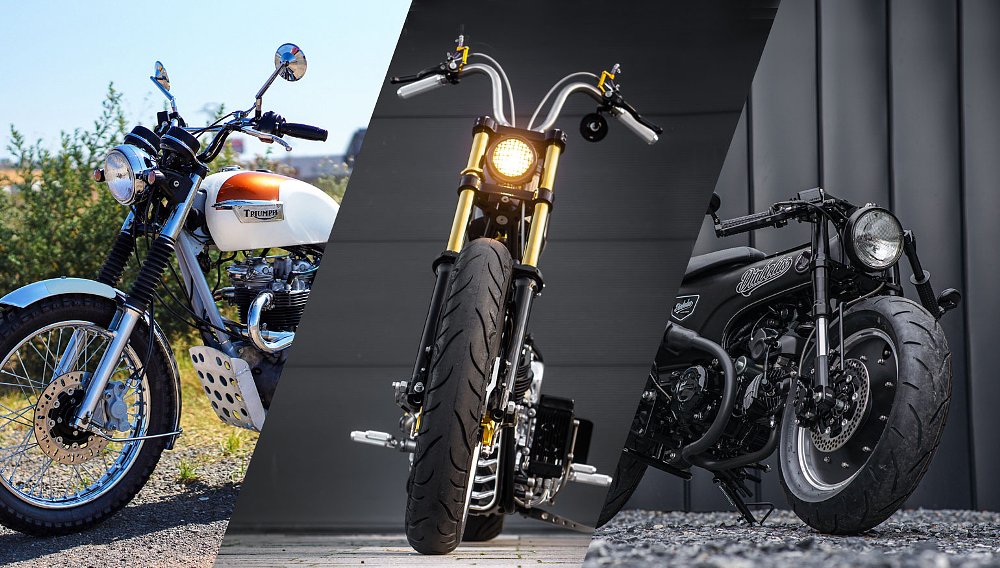This month's roundup features three race-inspired custom motorcycles with three very different purposes.
There's a Yamaha SR400-based Street Tracker by Wedge Motorcycles built to rip around the streets of Tokyo. A Harley-Davidson show bike built as a hat tip to the motorcycle that earned the company its first land speed record. And a performance-focused project that holds the title of the world's most powerful Royal Enfield GT650.
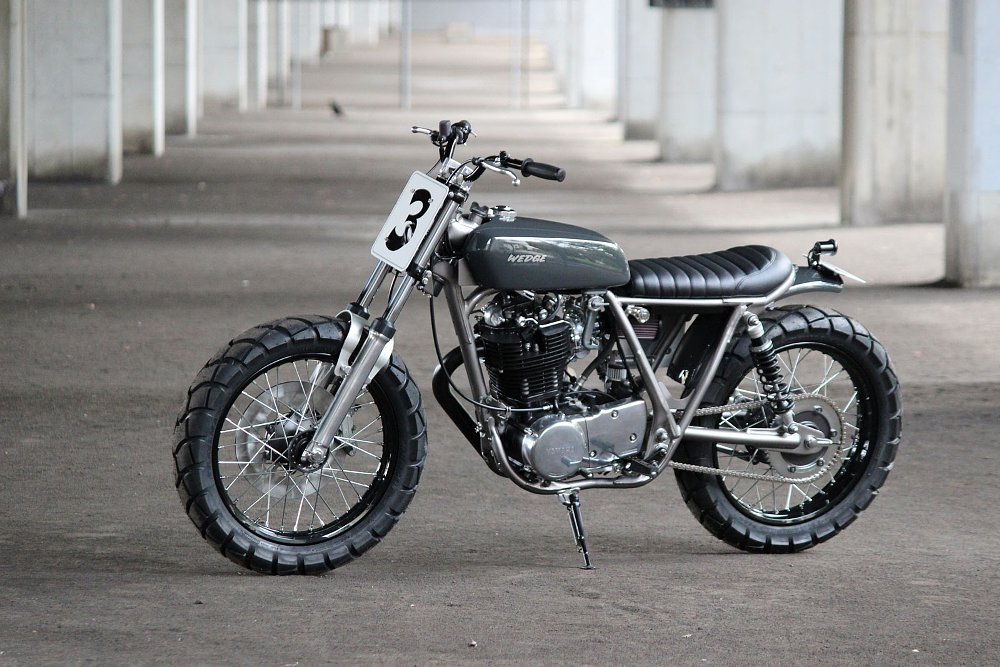
Wedge Motorcycles Yamaha SR400 Street Tracker
Takashi Nihira of Japan's Wedge Motorcycles (Instagram) has been flying solo for 15 years now. The multidisciplinary builder's career began as a car mechanic but over time he's added metal shaping and paintwork skills to his repertoire. As a result, almost everything you see on a Wedge motorcycle was completed by the man himself.
Takashi-san's custom work is mainly focused on motorcycles that are domestic in Japan. His work has bagged him many awards at local shows and earned him several commissioned deals with big-name manufacturers.
This project began as a customer order with two specific requests. The first was that the bike should be based on a front disc brake model of Yamaha's longest-running air-cooled single, the SR400. The second was for it to be customized in Street Tracker trim. To meet the brief, Takashi-san acquired a 2005 model Yamaha SR400 and set about building a street-going version of a flat-track race bike.
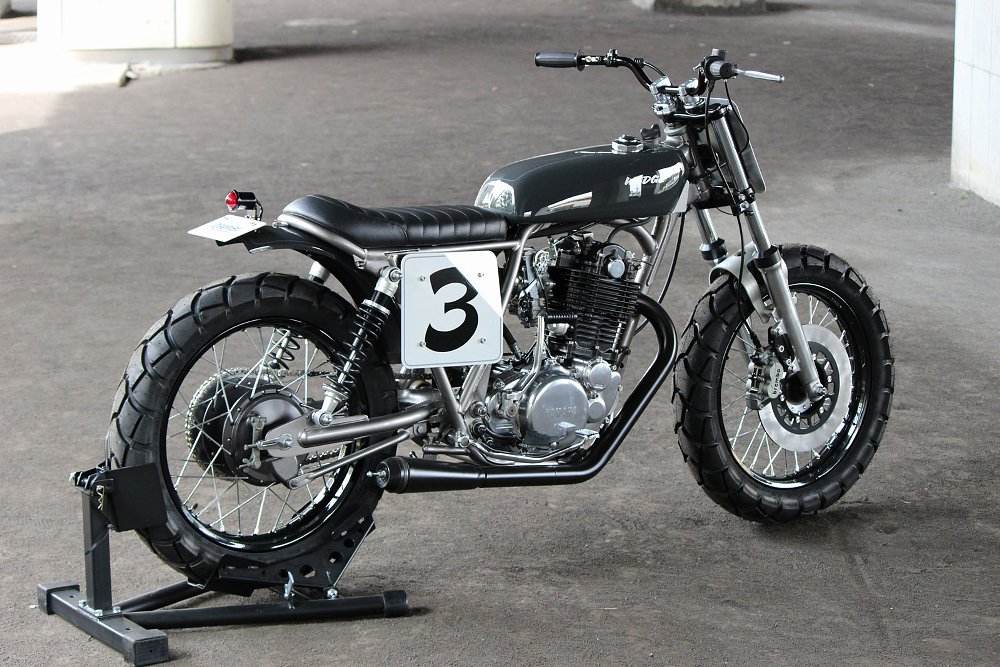
As with any custom build that rolls out of the Wedge workshop, this SR400's engine underwent a complete overhaul. To eke a few extra horses out of the thumper, Takashi-san has replaced the stock carb with a Keihin FCR and K&N air filter. At the noisy end of the combustion cycle sits a custom exhaust header that wears a three-inch Supertraap muffler.
Additional performance improvements to the SR400 come in the form of a Brembo front brake upgrade and a pair of YSS shocks in the rear. From there on this build was all about aesthetics.
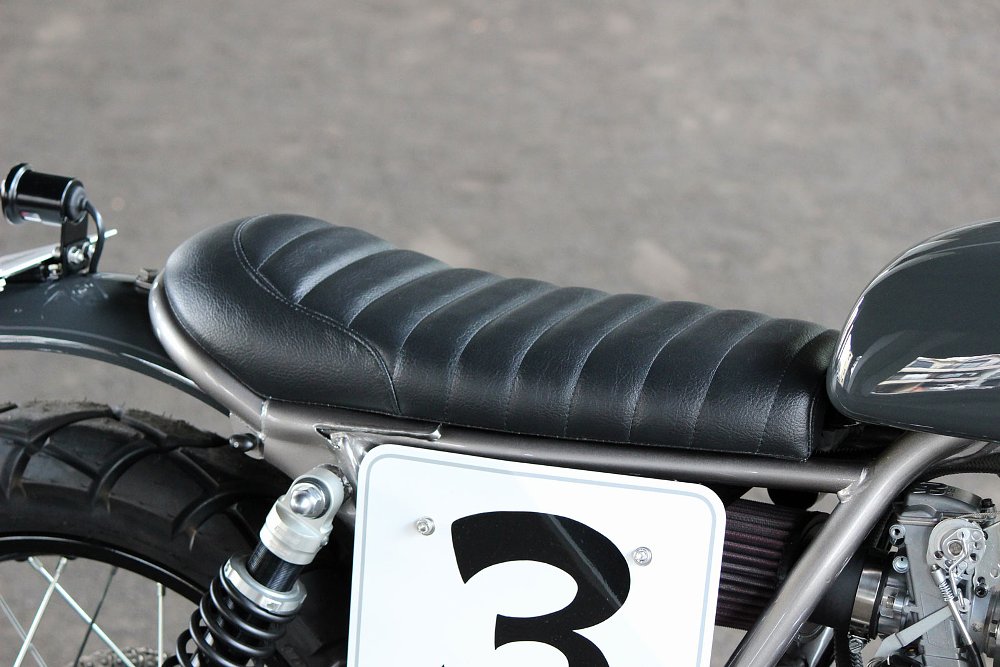
The SR's metallic silver chassis features a one-off subframe that dispenses with excess bulk and adds a classic hoop. Beneath it sits a custom-made aluminum fender and above a tuck-and-roll tracker seat finished in black leather. At the pointy end of the bike, the stock fender has been replaced by a brace to stiffen up the forks, and the centerpiece of the build, the aluminum fuel tank, is another handmade creation.
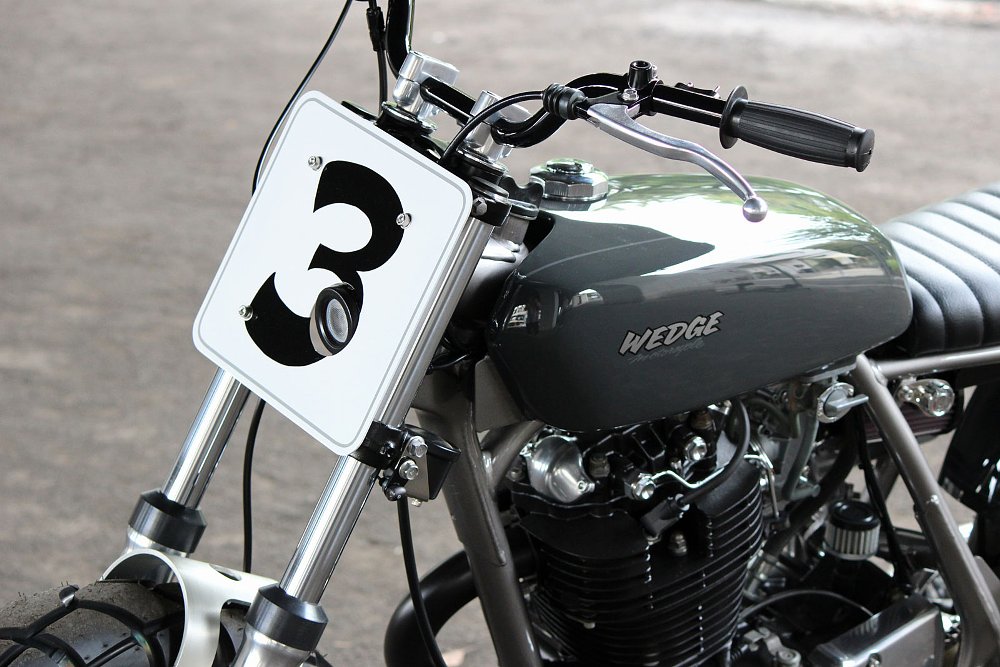
Despite a future limited to road riding, Takashi-san wanted the SR to look as close to race-spec as possible. So a racing number plate has replaced the factory headlight. To retain a street-legal rating there's a small LED lamp projecting through a cut-out in the plate. Another race plate covers the triangle in the frame, filling the void left after the removal of the airbox.
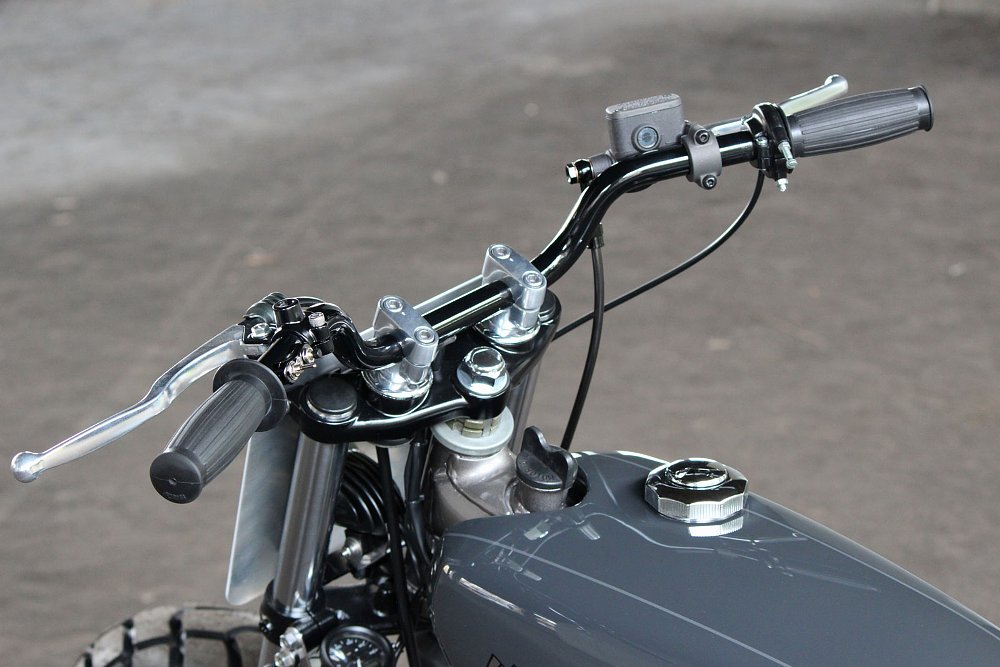
Speedometers aren't something you'd expect to find on flat-track race bikes. To remedy this, Takashi-san has relocated the speedo to a discrete position on the left of the lower triple clamp. In addition, the handlebar setup has been simplified by adding tiny aftermarket switches, aftermarket levers, a single-cable throttle assembly, and Beston GT-style grips.
The rest of the SR's lighting utilizes minuscule Kellermann Atto LED turn signals mounted to the lower triple clamp and subframe. And there’s a retro-styled brake light perched atop the rear fender. And a pair of chunky Dunlop Trailmax Mission tires complete the dirt racer look.
Wrapping things up is a tastefully understated paint scheme of nardo grey that complements the silver and black finishes of this SR street tracker to a T.
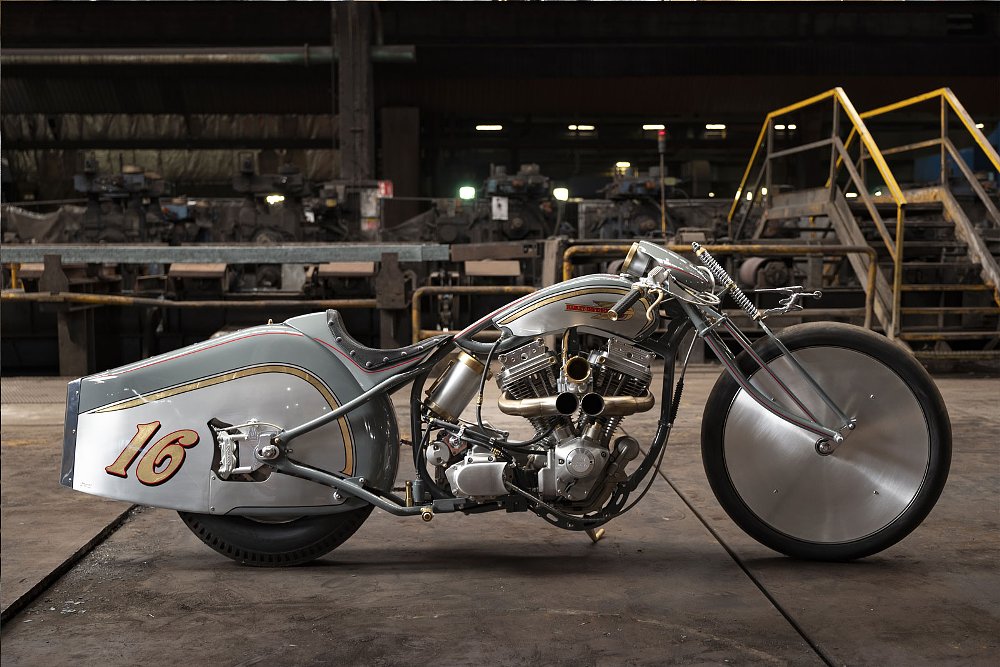
Gallery Motorcycles "Goddess of Speed" H-D Evo
In 1937, accomplished racer "Smokey" Joe Petrali, set a land speed record at Daytona Beach. Riding an OHV 61 ci Knucklehead-powered 1936 EL and tucked tightly into the bike's experimental streamlined bodywork, he set a speed record of 136.183 mph. His achievement marked the first land speed record for a Harley-Davidson and it stood for an impressive 11 years.
In recognition of Petrali's achievement, Damiano Roncaglioni of Italy's Gallery Motorcycles (Instagram) built this bike, which he's affectionately named the "Goddess of Speed."
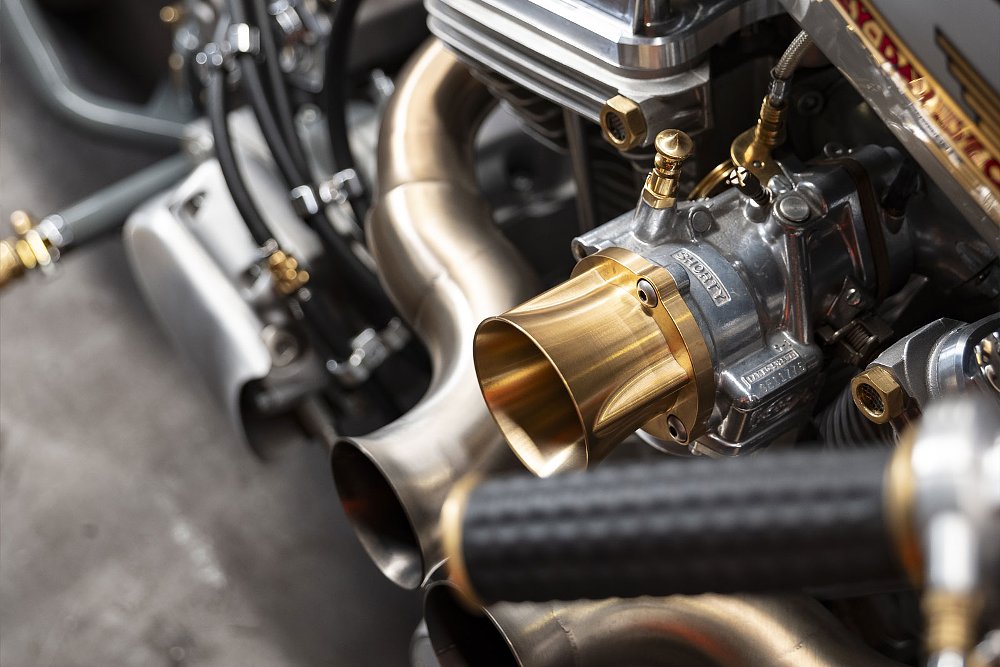
"We didn't want to make a replica," Damiano says. "The inspiration comes from the universe of speed records, with many references to the pre-war epoch of land speed records."
The similarities between this bike and Petrali's are subtle. There's no 80-year-old engine, bulbous front fairing, or bright blue paintwork. Instead, at the heart of the Goddess of Speed is a 1340 Evolution engine, chosen to honor the 40th anniversary of the Evolution's introduction to the market. Fueling the V-twin is an S&S Super E carburetor. Two very short, and undoubtedly loud pipes hang off the exhaust ports and a cylindrical tank hung behind the rear cylinder houses the oil. The Evo's unique appearance is the result of a mix of modern and classic design details. CNC-made parts like the alloy rocker and points covers are juxtaposed against turned and plated brass components for a timeless, classic look.
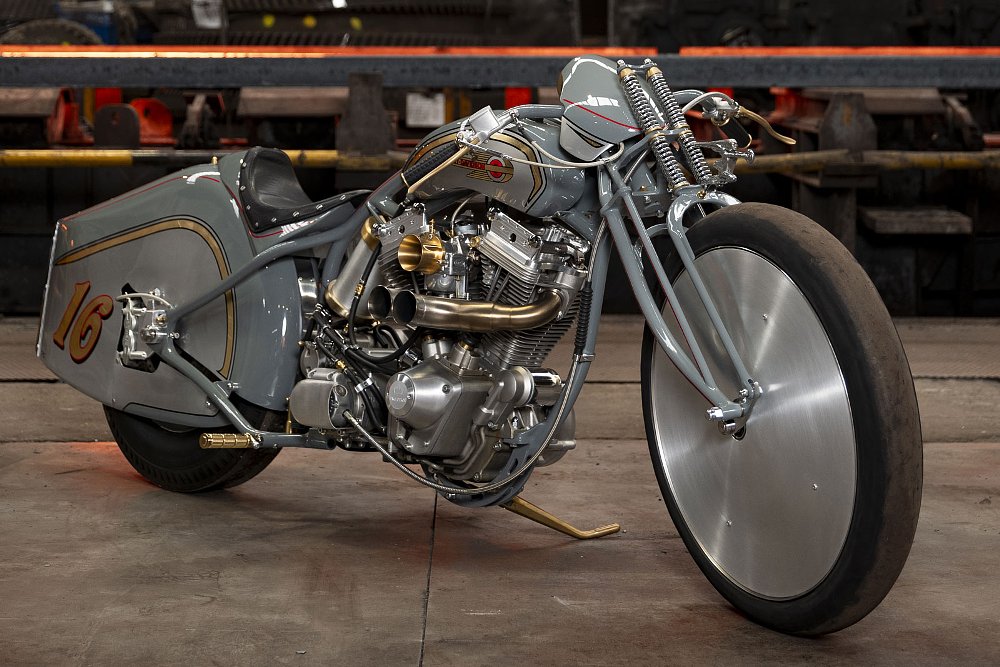
Roncaglioni spent six months crafting the Goddess of Speed. The frame, handlebar, and springer fork are entirely custom and all of the welds have been smoothed. Twin hand-shaped aluminum fuel tanks sit between the twin backbones of the custom chassis. The star of the show is the streamlined rear fairing which, similar to Petrali's record-setting machine, encompasses the rear wheel. The wheels themselves are a 23-inch and 16-inch front/rear combo and both have been wrapped in slick drag-racing rubber.
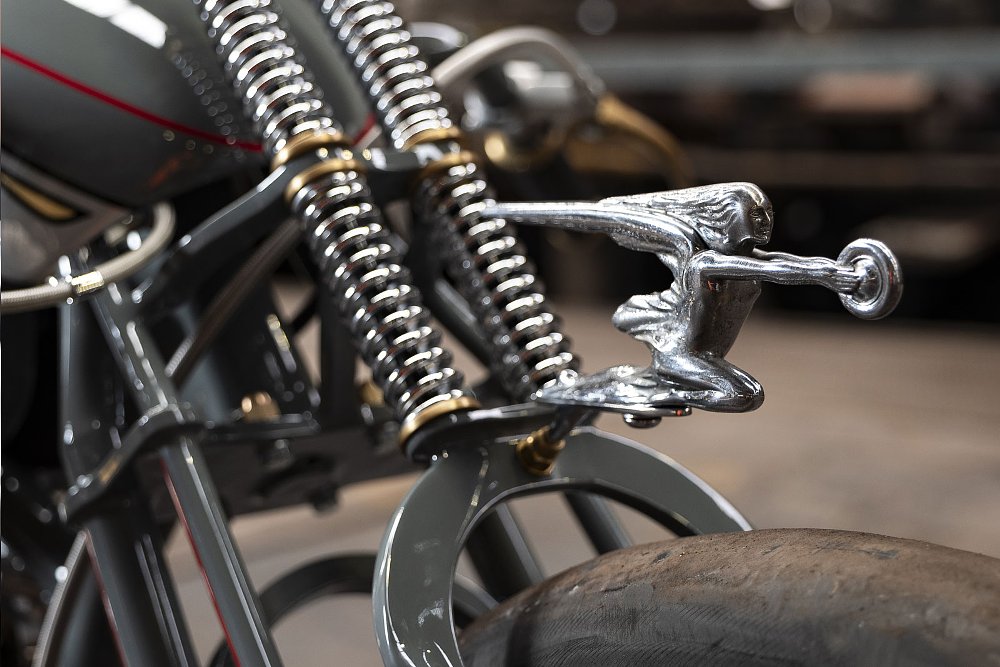
There's no shortage of impressive details on this show bike. From the gold leaf and hand-pinstriped paintwork by Dox Art Factory to the countless brass and chrome-plated embellishments. Most notable, however, is the bike's mascot, a cast statue of Nike, the Greek goddess originally found on a 1937 Packard and commonly referred to as none other than the Goddess Of Speed.
Since unveiling the Goddess of Speed, Damiano has bagged several trophies, including "Best of Show" at the European HOG Rally in Senigallia, Italy, and at Italian Bike Week. And it's easy to see why. The bike is a unique blend of history, craftsmanship, and performance that can't go unnoticed.
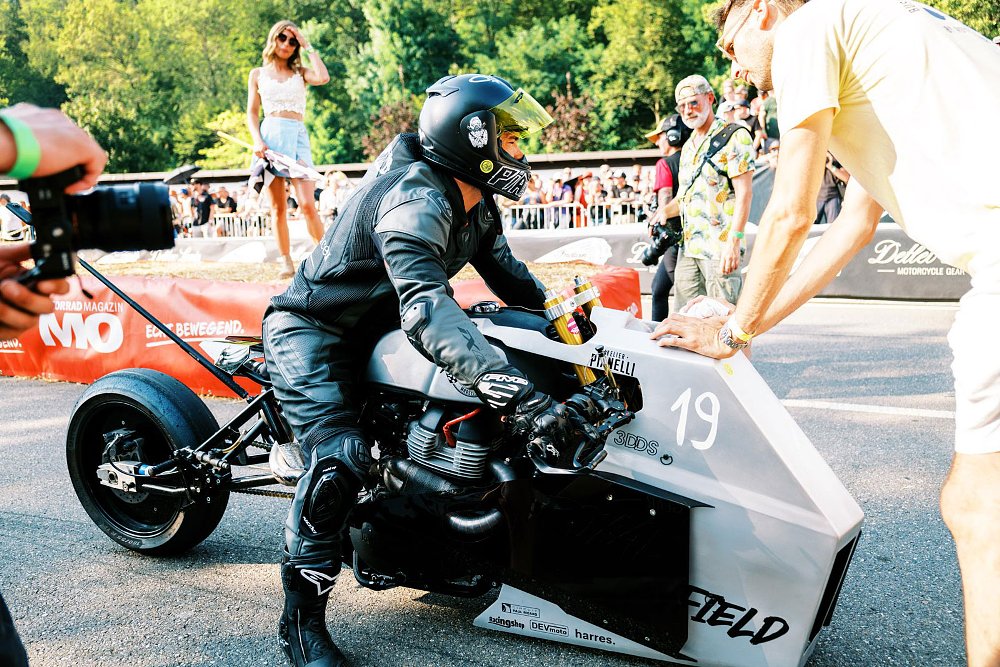
Atelier Pianelli Royal Enfield Continental 650 Dragster
As a child, Benjamin Pianelli was inducted into the world of motorcycles by his father and older brother. Although he never received any official training, he started his custom workshop 10 years ago, performing all of the mechanical, design and fabrication work himself. His workshop, known as Atelier Pianelli (Instagram) is located in the south of France, and despite his modest beginnings, he's built something extraordinary.
"This bike is a Royal Enfield Continental GT650 that raced in the Conti GT cup two years ago," Ben explains. "Around the time when Royal Enfield was organizing their ‘Busted Knuckle Build Off,’ I met Léo, the owner of the Royal Enfield Marseille dealership and I told him, 'If you want to win, listen to me'." The chance meeting spawned a collaborative project with a dream team of contributors.
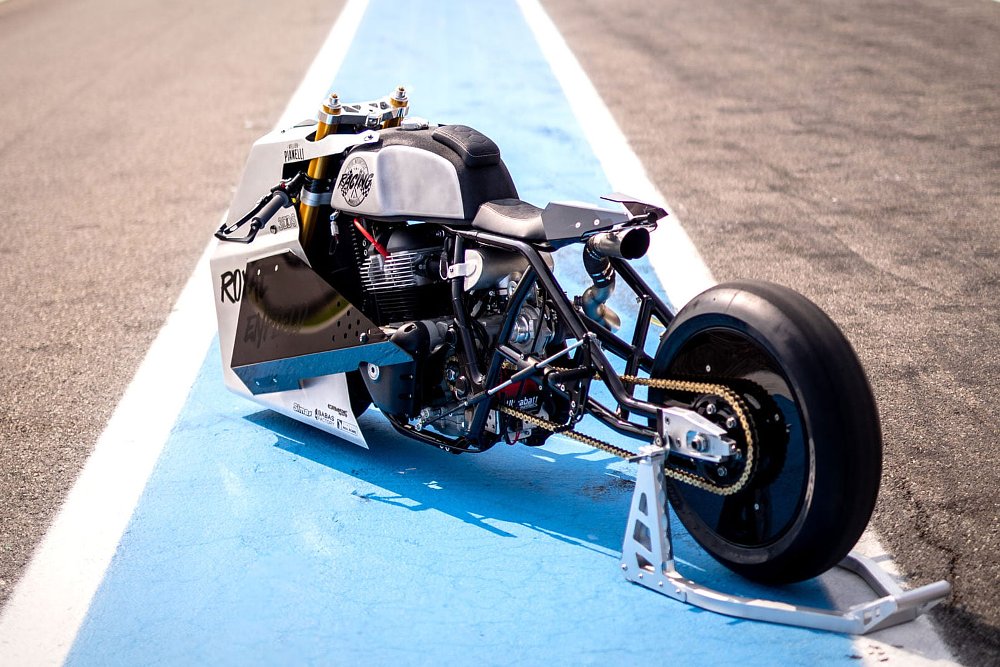
To realize his vision for the bike, Ben first tasked motorcycle designer Ulysse Letenuer, otherwise known as Babas Factory, with creating a digital render of the bike. "I already had an idea in mind of a motorcycle reminiscent of a 1930s streamliner, which I modernized to reflect my neo-retro style of work."
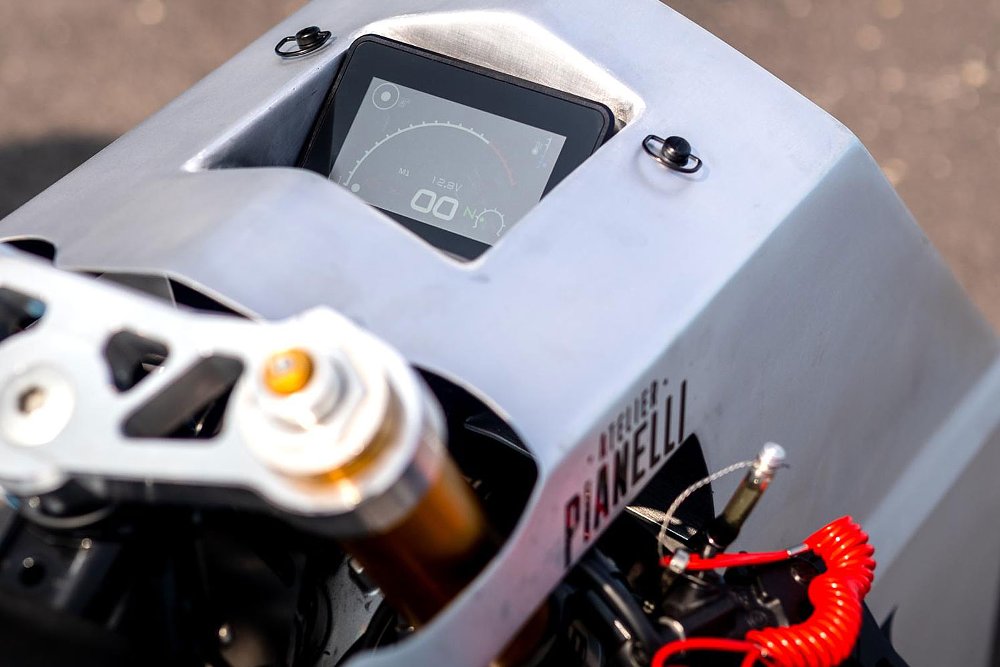
Nicknamed the "Dragster," Ben's GT650 would be unrecognizable if it weren't for the bike’s unmistakable parallel twin peering out from beneath the bodywork. The smooth, classic curves that Royal Enfield envisaged for the GT650 have been replaced by angular, hard-edged lines. The front wheel is completely hidden from view by the huge fairing and the finned rear cowl looks like something you'd expect to find on Kawasaki's H2R. The layout of the controls has been completely reworked, too, establishing a drag racing riding stance and the GT's footprint has been generously increased with the fitment of a rigid subframe.
This build wasn't just about creating a unique look, though. Ben wanted this Enfield to be the blisteringly fast.
"The Busted Knuckle Build-Off was a purely aesthetic competition, but after hours of discussion with Léo we decided to optimize the engine, too," Ben recalls. One surefire way of greatly improving the performance of an engine is to introduce forced induction, so that's exactly what they've done.
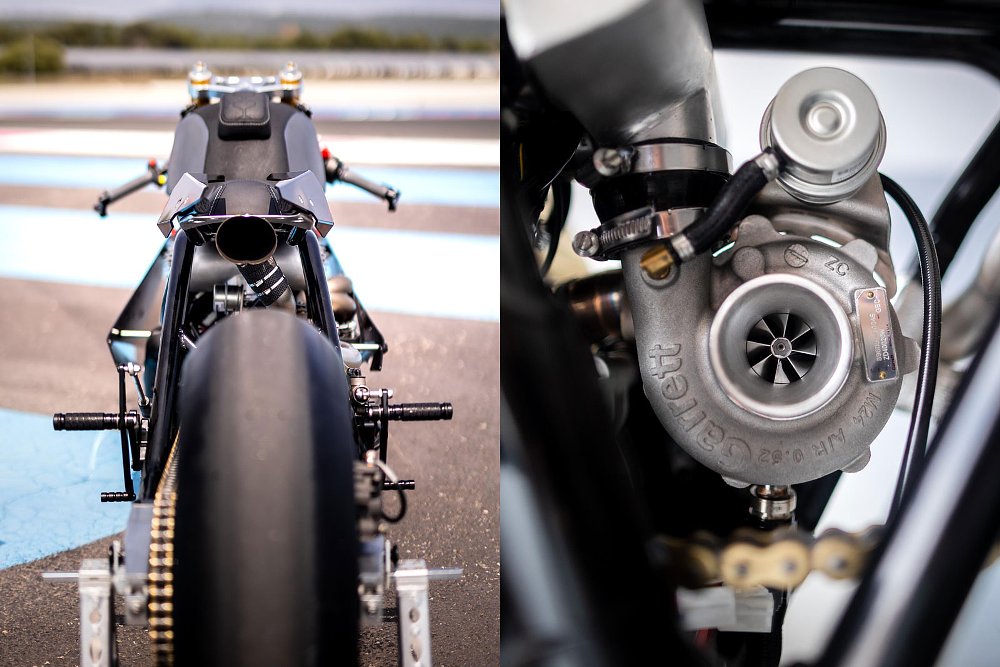
To do the job right, Ben contacted local turbo experts Racing Shop, who agreed to come on board as a partner and contribute a Garrett turbo to the cause. They then worked alongside Leo's team to complete the engine work. To complement the turbo, the engine's compression has been lowered and it's received an improved oil cooling system, a forged connecting rod, a modified head, a BMW 850 injector, and an electronic quickshifter. Auto electric experts DEVmoto came onboard, too, building a custom wiring harness and fitting a programmable performance ECU.
With everything ready, the bike was finally delivered to Ben at his Atelier Pianelli workshop so the final construction could commence. With just over a month until the Busted Knuckle Build-Off at the 2024 Wheels and Waves festival, he had a huge task ahead of him.
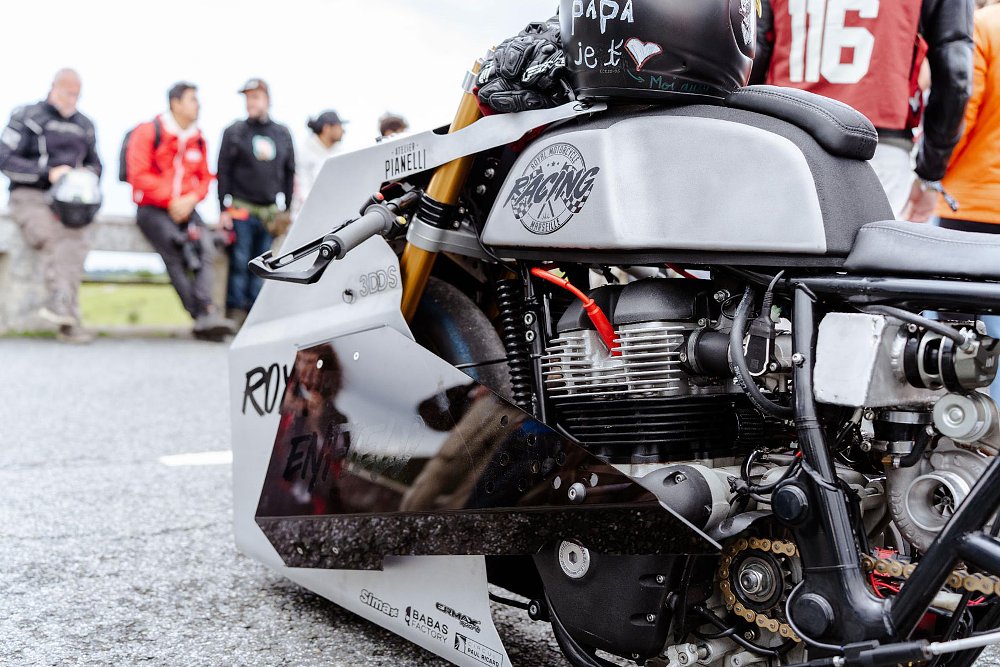
With very little time to spare, Ben had the bike 3D scanned by the team at 3DDS. This allowed him to accurately model and then rapid prototype the bodywork and other custom-made parts. After welding the rigid subframe to the existing chassis, he fit a modified fork from a Yamaha YZF-R6 using a CNC-machined top clamp. The same R6 contributed its wheels, brakes, and foot controls to the cause. Ben shaped the huge front fairing from aluminum; integrating a digital gauge into the cockpit and fitting plexiglass vents to aid with cooling and aerodynamics. Another build partner SV Saddlery put together the new seat and Ben built the two-into-one exhaust system from scratch.
When the Dragster appeared at the Wheels and Waves festival, the Busted Knuckle Build-Off judges awarded it second place, but the bike's journey didn't end there. Soon after, it cut its teeth on the track competing in the Glemseck 101 sprint races. Aside from a few small issues to iron out, Ben says the bike performed admirably. As for their next stop, finances permitting, they'll take it to the Bonneville Salt Flats for a shot at a land speed record.
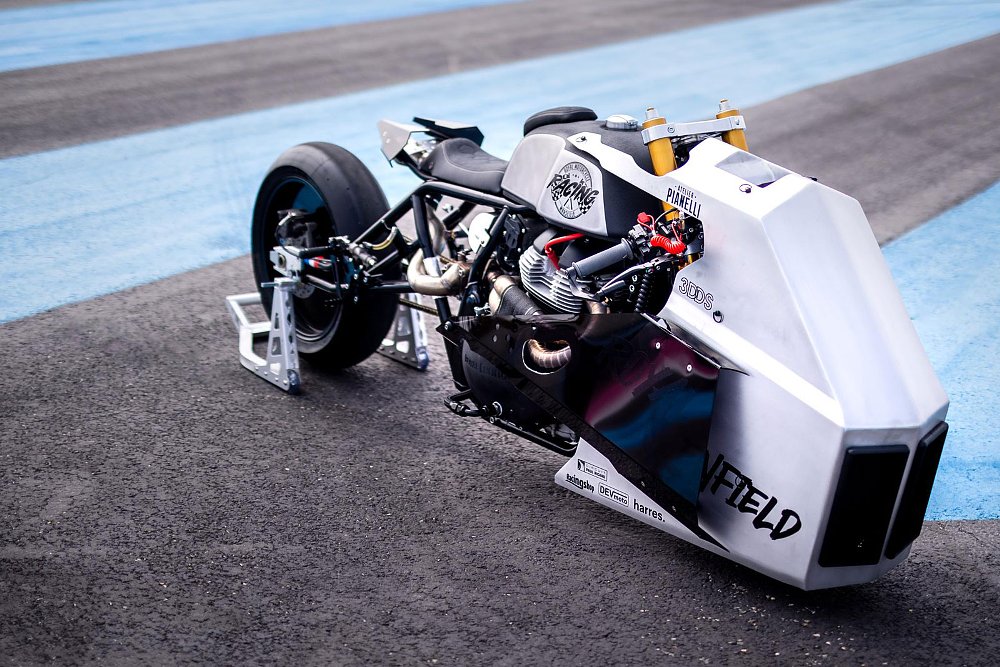
"We have built the most powerful GT650 in the world with 120 horsepower at the rear wheel and about 150 at the crank," says Ben. And with any luck, it'll soon prove itself to be the world's fastest, too.

 Membership
Membership

